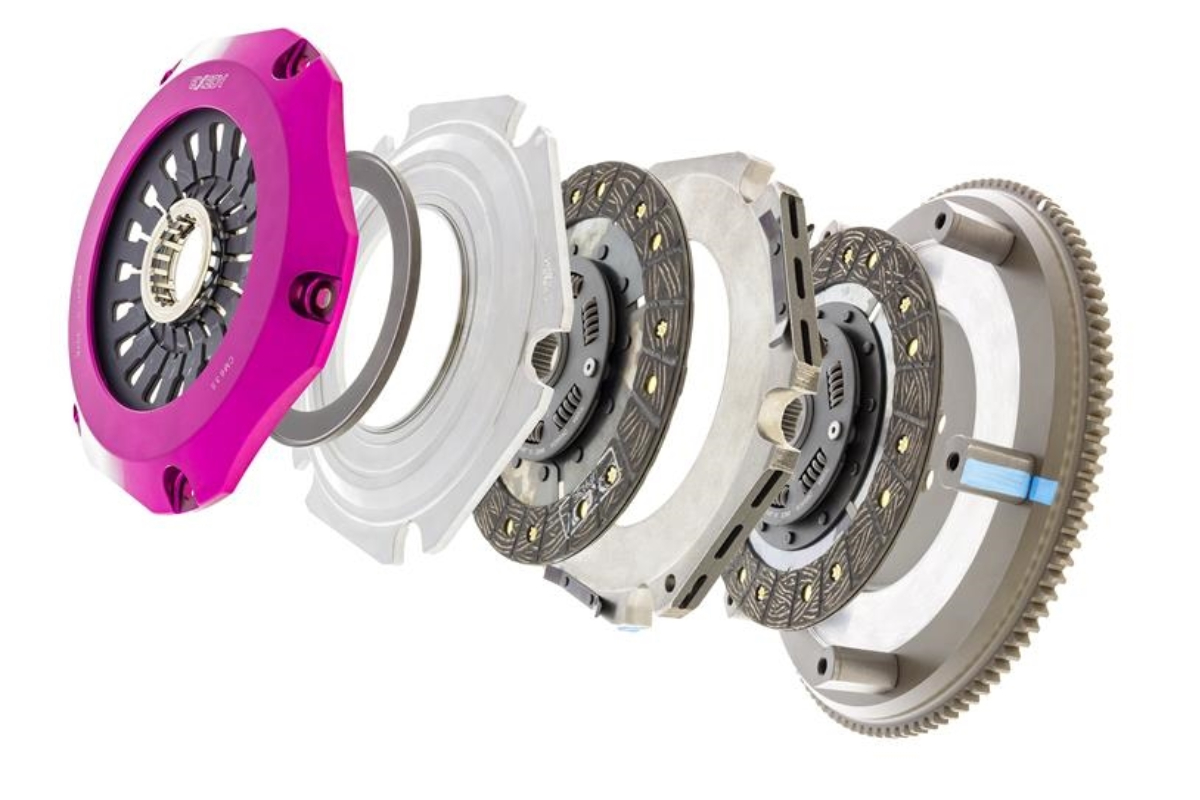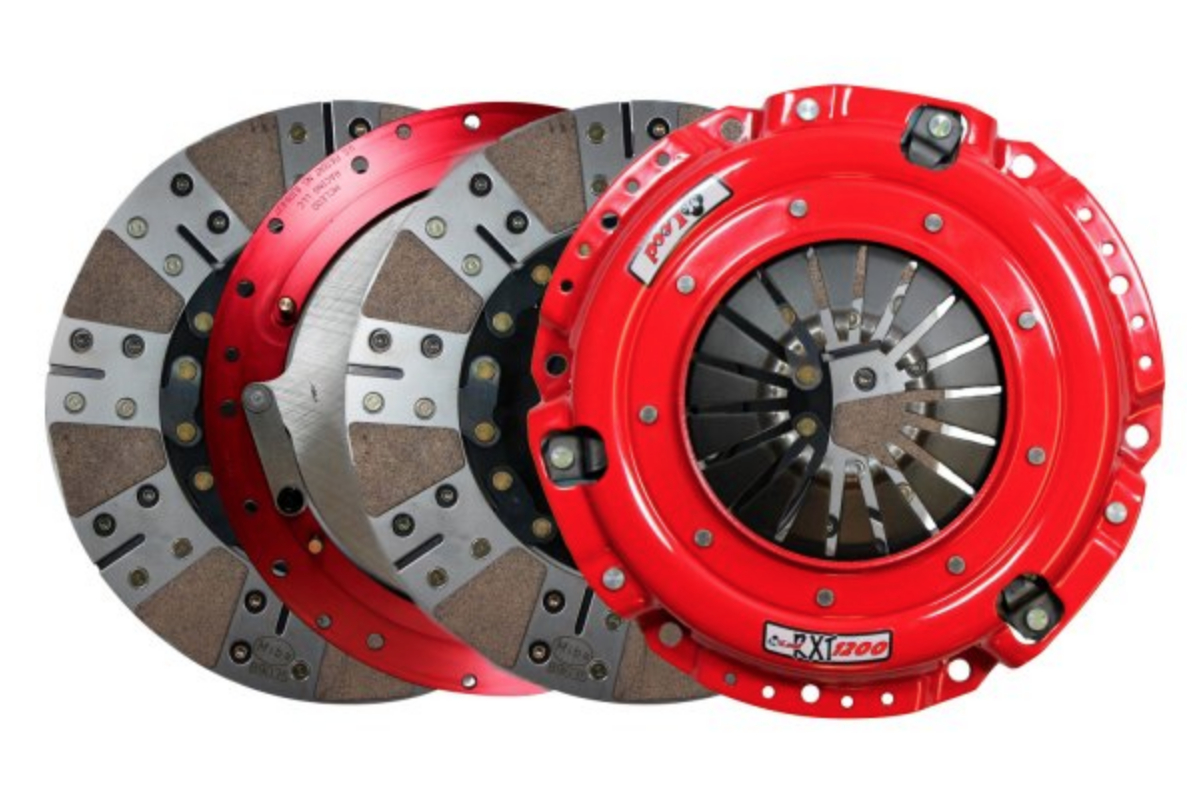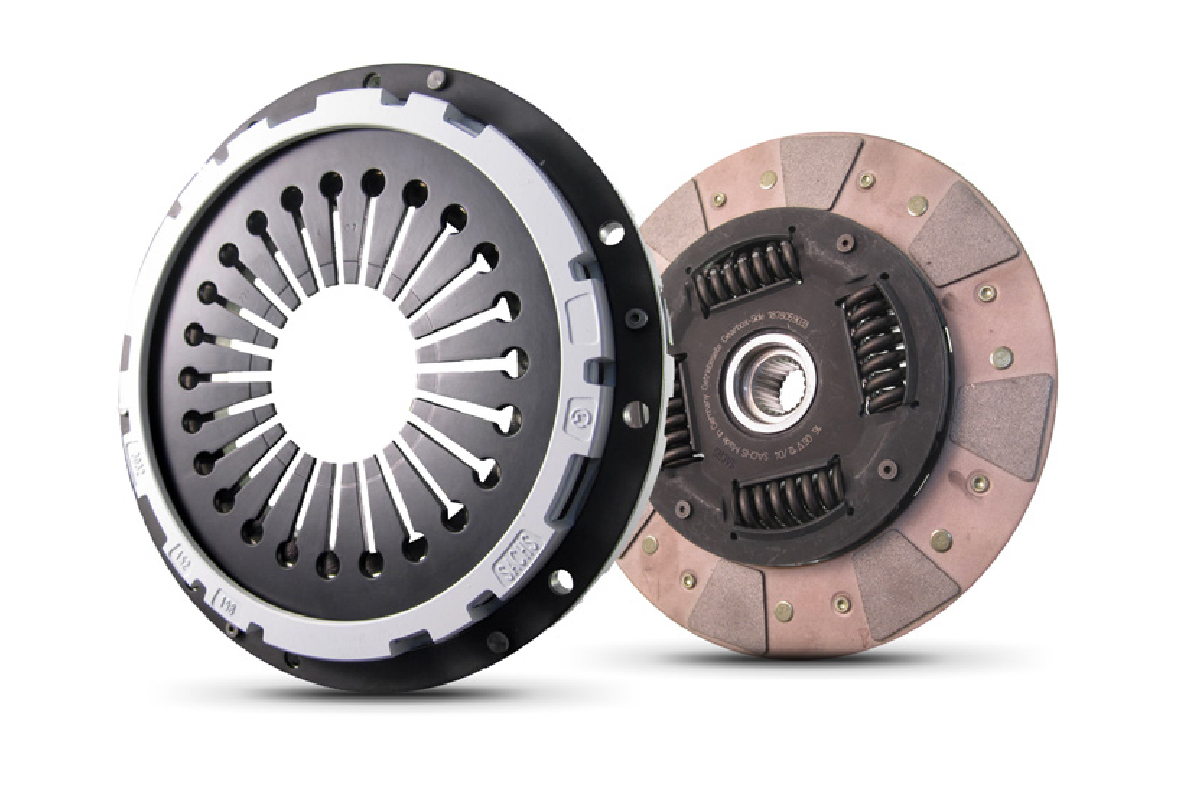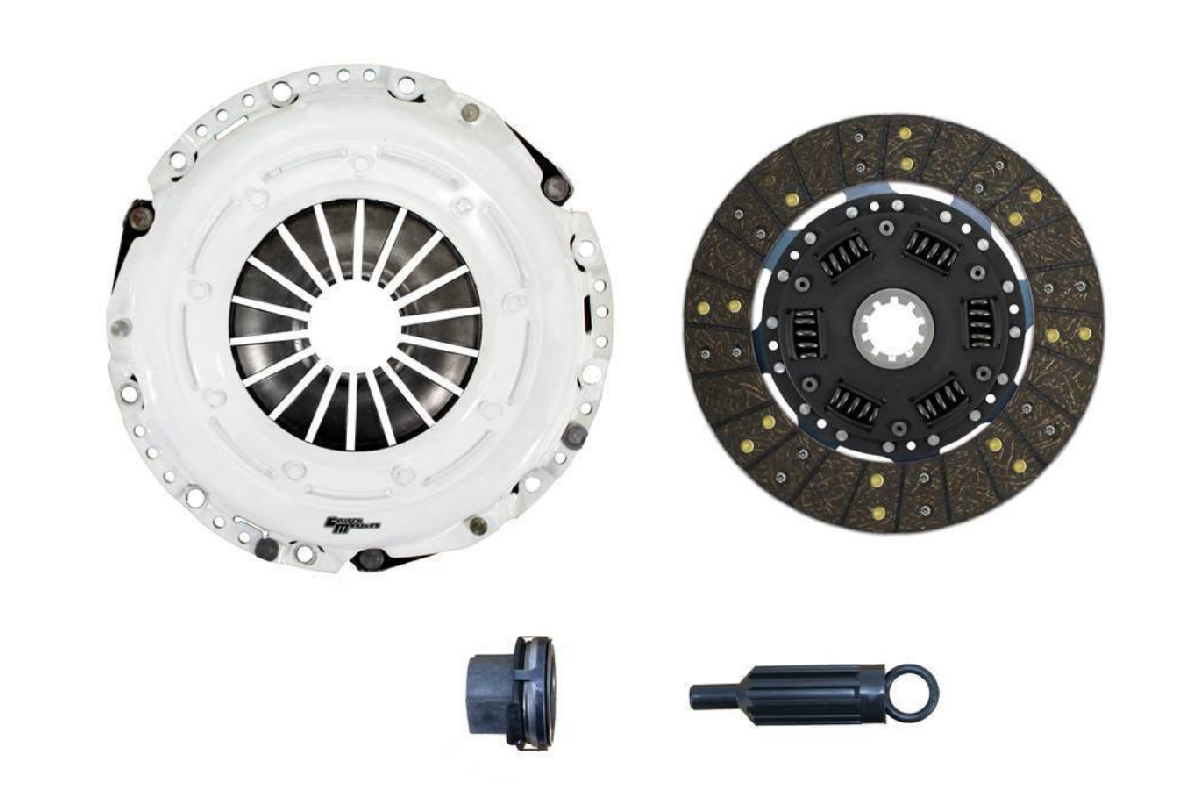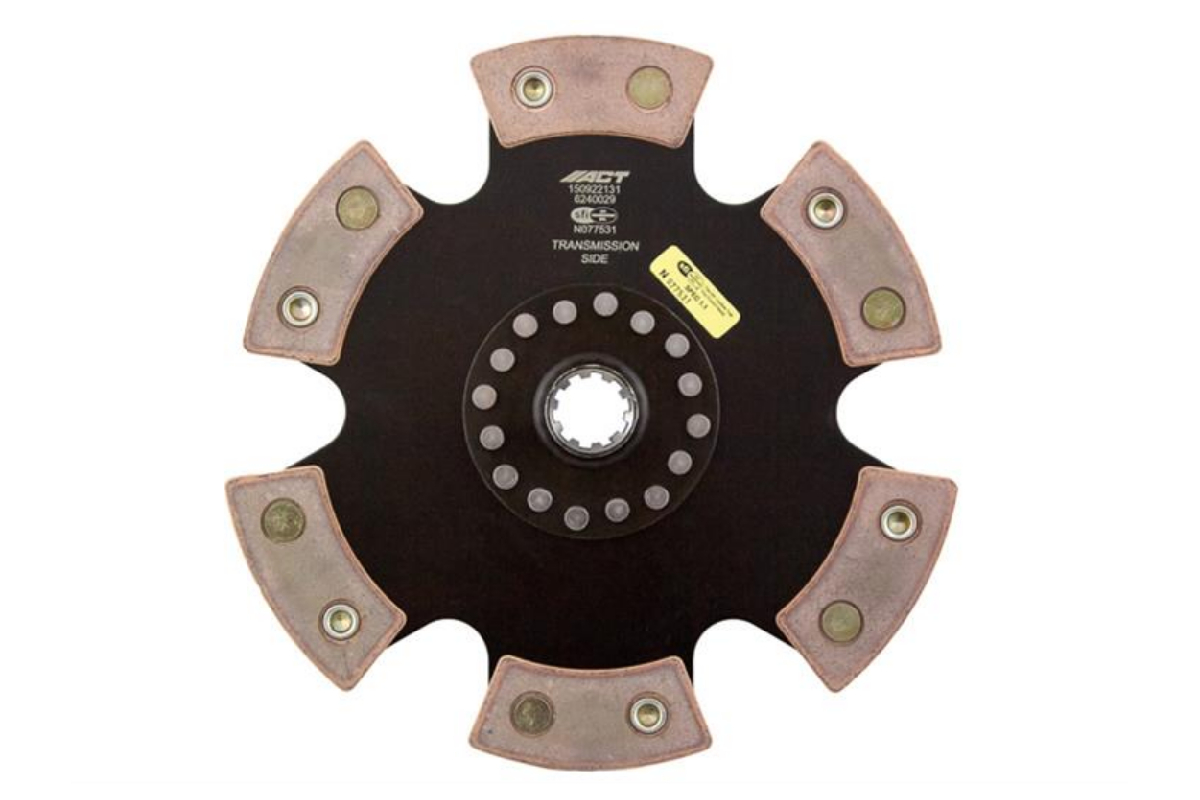It may seem like manual transmissions are a thing of the past, with many drivers not knowing how to drive them or even how they work. There are, though, several purists and enthusiasts who still own stick cars and enjoy the thrill of shifting gears and being more in control. After all, they’re much more driver-involved, maintenance-friendly, and super fun! When it comes to driving a manual transmission vehicle, there are many important components involved that are required for a smooth driving experience. The clutch master cylinder generates hydraulic pressure with fluid which then activates the slave cylinder. Once the clutch pedal is depressed, the slave cylinder engages the throw-out bearing which disengages the clutch. Once the clutch is disengaged, no power is being delivered to the drivetrain from the vehicle’s engine which lets you switch gears and be in control.
The clutch is basically a physical disc that lets you engage or disengage the transmission from the flywheel. A clutch is vital for seamlessly shifting between gears and delivering power from the engine to the vehicle’s transmission. The clutch pressure plate and friction plate are bolted to the flywheel which spins when the engine is running. When engaged, the friction plate makes contact with the flywheel and the pressure plate that is attached to the transmission’s input shaft. The input shaft features a gear to transfer power to the countershaft or intermediate shaft which has gears with different ratios for first, second, third, and so on. When neutral is selected, none of the gears on the output shaft are locked, thus allowing the input and output shafts to rotate independently. To reverse, an idler gear is used to reverse the direction in which the output shaft rotates.
Browse Full Clutch Inventory Here
What Is A Slipping Clutch?
When the engine is producing much more than the factory power outpt, the clutch can begin to slip. A slipping clutch is a common occurrence that will happen at some point with manual vehicles; this is why it is recommended that a clutch be checked after about 60k miles. Slipping is a result of the clutch friction disc not engaging with enough force to hold against the flywheel. Another cause of a slipping clutch is the friction material and surface area not adequately making contact to allow the power to be delivered to the transmission. As a result, the car will not have any power to drive or propel the vehicle forward. Clutches can fail due to normal wear and tear and also from driving habits or conditions. It can also depend on the temperature of the environment where the car is kept. For example, hotter locations run the risk of the transmission fluid running at higher temps and wearing out the parts faster.
It may be time to replace your clutch for a number of reasons including a slipping clutch or because the clutch in your drift car just blew up. It may also be a good idea to upgrade your vehicle’s clutch kit if you have enhanced its performance and power significantly over stock. Mating the right clutch disc to your vehicle and application is a critical step to maintaining proper and safe performance. You will need to know a few important details before shopping for one, including whether it’s for street or track use, what the horsepower rating is, and what type of driveability is to be expected. While a spring or unsprung disc is a major factor, as well as what the clutch material is (for friction), it’s also necessary to determine which style of clutch disc is required for your car: a full disc or a puck-style clutch disc.
Full Face vs. Puck Style Clutch Discs
Clutches come in a number of different variations due to their specific motorsports application. Virtually every OEM clutch is a full-face clutch due to cost and ease of driving. Readily available and boasting a proven design, a full-face disc is reliable and performs well for most consumers. Plus, the cost of manufacturing a full-face clutch disc is much less expensive when compared to a puck-style disc. A full-face disc is almost always a sprung clutch disc, which allows for a smoother engagement of the clutch throughout the feel of the pedal and is, thus, ideal for street driving conditions. Some entry-level unsprung or rigid full-face discs are available for cars with light to moderate modifications and horsepower increases, and are a good replacement option for normal wear and tear. With full-face discs, the clutch pedal has much more engagement travel versus a puck-style disc.
Puck-style clutches are exclusively high-performance clutch discs and are made for instances where instant clutch engagement is crucial. These types of clutches provide immense friction per square inch in comparison to full-face discs. The friction material on puck-style discs is far more aggressive in order to provide quick engagement of the clutch. Fast engagement of the clutch is required for harder driving scenarios like road racing, drag racing, drifting, and the like. Quickly releasing the clutch with a full-face sprung disc could cause slipping as they are intended for light-duty clutch function and smoother engagements. Puck clutch discs can be tough for everyday driving as the pedal is usually stiff and smooth engagement during traffic is challenging. That’s because there is more force exerted on the flywheel with a puck clutch since it “grabs” almost immediately. This can cause unpleasant jerking on the street which is why they are almost always used in racing applications.
Some companies meet in the middle by offering a sprung puck-style friction disc with a streetable pressure plate to provide smooth, yet, firm engagement with no chance of slipping. A sprung puck-style clutch disc can help alleviate the jerking feeling on the street, but it’s still much more aggressive than a full-face clutch disc. These clutch options are typically Stage 2 or 3 variants. Because of the extreme differences between a full clutch disc and a puck-style clutch disc, it’s important that you do your research and choose the right one for your driving habits. Generally speaking, the rule of thumb is to stay with a full clutch for street driving (unless your car is heavily modded) and use a puck clutch for racing.
Sprung vs. Unsprung Clutches
We briefly touched upon these terms in the section above, but let’s delve a little deeper into what a sprung clutch is vs. an unsprung clutch. Simply put, “sprung” refers to the springs on the clutch disc itself. These springs compress when the friction plate makes contact with the flywheel allowing for a softer transfer of force. The springs, found around the hub, absorb the shock before transmitting the power to the input shaft of the transmission. Without these springs, the clutch would engage as soon as the disc meets the flywheel which can be useful in certain applications.
Those little springs on the sprung clutch work hard to drastically reduce drivetrain noise and vibration, reduce wear on parts, and make it easier to drive overall. Nearly all production vehicles with a manual transmission feature sprung clutch discs as they provide seamless engagement, softer pedal feel, and are less expensive to manufacture. Sprung clutches are perfect as a direct-fit OEM replacement and for street-purpose performance cars, even if you are making 30-50 percent more power than stock.
An unsprung disc is comprised of a solid hub without any springs, making it slightly lighter and a bit more rigid. Unsprung clutches consist of a single-piece friction disc design that is highly beneficial in the racing world. Having an unsprung disc allows for instantaneous clutch engagement which means the power is being delivered to the transmission immediately. With an unsprung clutch, many refer to the pedal as an “on-off switch” being as there is no longer any give to the friction disc and engagement is instantaneous when the driver lets off of the clutch. Furthermore, a lighter clutch assembly and lightweight flywheel can breathe life into the car and transform your driving experience.
Manufacturers have found a way to combine comfort and performance with the latest clutch technology to provide consumers with the best of both worlds. Companies like SPEC, Clutch Masters, Centerforce, ACT, Exedy, and many others offer sprung or unsprung clutches in both full-face and puck styles. Any combination clutch disc can be chosen for specific driving requirements; you just have to figure out what your habits are and what the ultimate goals for your build are.



